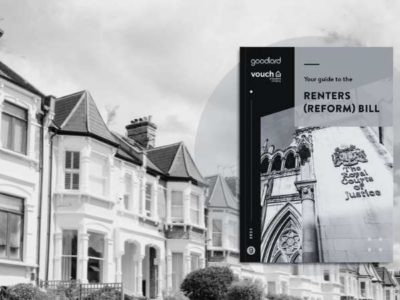Not only have new-build property values climbed by 23% in the last year, the sector has outperformed the existing property market by 17%.
The latest data released by the Land Registry was analysed to look at the annual rate of house price growth seen across both the new-build and existing property markets and the difference in the house price performance.
The average British new-build has increased by 23% in value over the last year alone, now commanding an average of £412,051.
In contrast, the average existing resale is currently achieving £282,037 in current market conditions, having increased by just 6% on an annual basis.
Not only has the new-build sector outperformed the existing sector by 17% when it comes to the average annual rate of house price growth, but the average new-build is currently commanding a 46% house price premium versus the wider market.
Scotland ranks top when it comes to annual house price growth performance, with the average new-build climbing by 29% in value – by far the highest rate of growth of all areas of Britain.
This rate of new-build house price growth is also 20% higher than the 10% increase seen across the regular market.
The new-build sectors in the East of England, Wales and the South West have also seen house prices climb by 18% more than the rate of growth seen across the existing market.
However, it’s the North East where new homes are currently commanding the largest house price premiums.
The average new-build in the region is currently valued at £257,371, 74% more than the average cost of an existing property (£148,327).
Even in a struggling London market, new-build house prices have climbed by 17% in the last year.
This rate of growth is 12% higher than the 5% seen across the regular market, with the average London new-build still commanding an 11% premium.
At an average of £593,168, the cost of a new home in London also remains by far the highest when compared to the rest of the British new-build market.
CEO, Iain Crawford of Alliance Fund, the end to end real estate fund responsible for the research, commented:
“Although the property market as a whole has stood strong in the face of economic uncertainty, we’ve seen numerous signs that the pandemic property market boom has been starting to wane in recent months.
This has certainly been accelerated by the turbulence seen across the mortgage sector as the threat of increasing interest rates has caused the cost of borrowing to soar.
However, when dissecting the market by sector, it’s clear that it’s the health of the regular market that’s deteriorating and the contrast between the new-build and existing property market is quite stark, to say the least.
New-build values have continued to soar, attracting strong premiums across the board, even in a largely lukewarm London market.
This undoubtedly due to a realisation by homebuyers that they offer a far superior investment and one that is going to hold its value to a far greater extent, even in the event that the property market takes a dip.
At the same time, many new-builds also offer a cost saving, whether that be initially in the form of subsidised stamp duty, or in the longer-term as a result of superior build quality and energy efficiency.
Something that has come to the forefront of the purchasing thought process for many buyers as a result of the cost of living crisis.”





















Comments